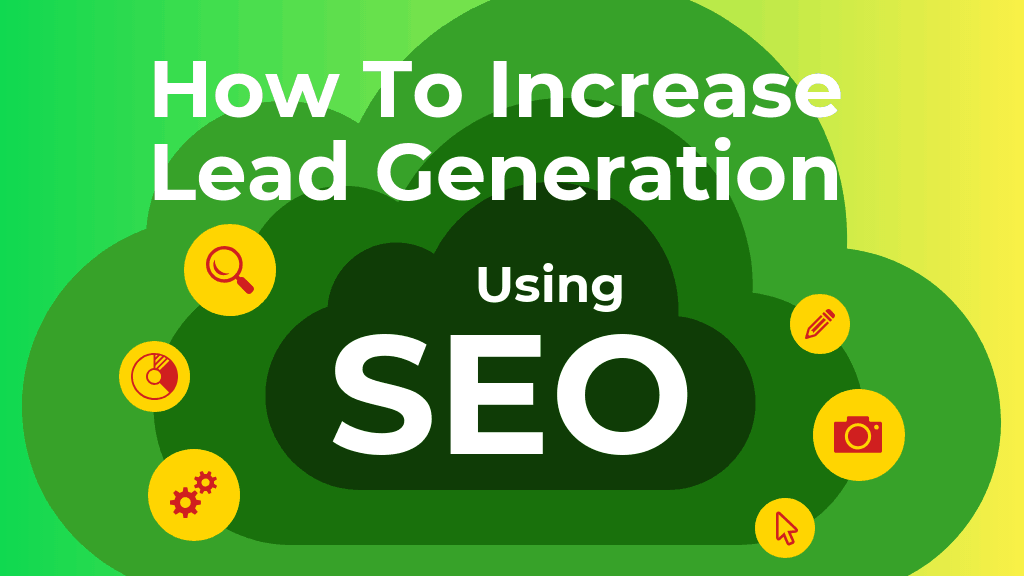It’s no secret that online marketing is largely dependent on SEO and important enough to take any business to the next level. Have you been trying to increase leads, generate more sales, and revenue? Did it yield any results? Leave it! Here we’ll talk about the best yet proven tactics to increase lead generation using SEO.
Lead Generation
Lead generation is the process of turning your potential audience into customers. The people who buy or use your products and services are called leads. However, leads can be further categorized into different types. For example, any of the following actions on your business website can be referred to as lead generation:
- Signing up for a webinar, contest, or event.
- Using a free trial.
- Entering personal information on a landing page i.e. name, email, contact, etc.
- Buying a product/service.
These actions are called leads or conversions. So, how to increase lead generation using SEO?
Determine Your Lead Generation
What are you trying to accomplish? Do you want people to buy your product, enter email address to a landing page, or give feedback? After you’ve compiled a lead generation plan, move on to the next step.
Core Requirements
You’ll need some tools to establish a lead generation plan. In this regard, following is the list of SEO tools to make your lead generation process a success:
- Yoast SEO Plugin: Yoast will help in optimizing your site for higher search engine rankings. You can keep track of the content type, quality, focused keywords, meta-description, alt tags, and much more with this single plugin.
- Email Service Provider: Almost every lead generation program includes sending emails to the potential audience. ESP like AWeber, Drip, SendinBlue are some recommended tools.
After you’ve installed these tools or plugins on your website, follow this post to learn more about how to increase leads with SEO.
Increase Your Email Lists
To improve your email lists, ask everyone on your website to sign up with an email after they make a purchase. You can get your website visitors to enter their email address against précised product tracking, complimentary gifts, or discounts.
Lead Generation Using Email Marketing
Now is the right time to make use of those email lists you’ve been grabbing for months. Write engaging emails with quality content and use ESPs like SendinBlue or Drip to engage users. While social media marketing works as a public discussion group, one can get personal with its potential customers through email marketing. In simple words, find ways to educate and interact with your customers while selling products and services.
Understanding Metrics
Now that we have looked at some ways to generate more leads, let’s now take a look at some key factors that you will want to keep an eye on in order to keep them. As we have seen, email marketing is a very popular form of lead generation and can attract many potential customers, but how do you track those customers? How do you really know their likes and dislikes? How do you know their needs? The answer to that question is simple… metrics.
Metrics, as well as for analytics, which are closely related but not the same, are very important when it comes to lead generation, especially with email marketing. If you are not conscious of your customer’s interests and or their behavior then you will be ignorant as to where to make improvements to attract or even keep the leads that you have gained.
There are many metrics that you will need to keep a close eye on as you continue to promote and engage your consumers whether that be through an email list, blogging, social media ads, content marketing, or video marketing, so let’s take a look at a few of the most important ones.
CTR
Otherwise known as clickthrough rate, this metric measures the number of your subscribers that follows a link to an email, website, or a call to action or simply put, a guide to help lead your consumer to where you want them to go.
Email Open Rates
This metric as the title suggests simple measures and keeps track of the number of people that are reading your emails. With that said, it is important to make sure that you have a captivating subject to draw your prospects in as well as having relevant information to keep the attention of your lead.
Subscription Rates
This important metric keeps track of how many users are subscribing and unsubscribing to your email list.
Abuse Reports
For any reason that your email is marked as spam, this metric will keep a track of those records.
Social Media Performance
This metric measures one of the most popular ways to market today, social media. Anytime your content is shared among the many social media outlets, you will be able to track that performance with this vital tool.
Conversion Rate
This metric tracks how many users are performing specific actions such as clicking certain links and buttons on your site. This metric even measures certain acts such as completing forms, this may be one of the topmost important metrics to keep your eye on.
Notes
These were just a few ways to generate more leads using SEO. Some other lead generation tactics include guest blogging, content marketing, video marketing, social media Ads, Google Ads, Influencer outreach, and much more.
With every customer signing up for your business website, you get one step closer to making him/her your permanent client. Therefore, lead generation isn’t just about selling your products. It’s about knowing your potential customers to provide quality services.
Conclusion
When it comes to metrics, you want to make sure to review them on a regular basis without overdoing it. A weekly or even a monthly review would be acceptable in order to keep up with the trends of your consumers. In order to meet their needs, you must first understand their needs and staying on top of your metrics will help you do that.
The key to lead generation or any marketing technique is to know your target audience. Age, behaviors, gender, education, likes, dislikes, marital status, and even income are all important criteria to be able to target in on your SEO.






